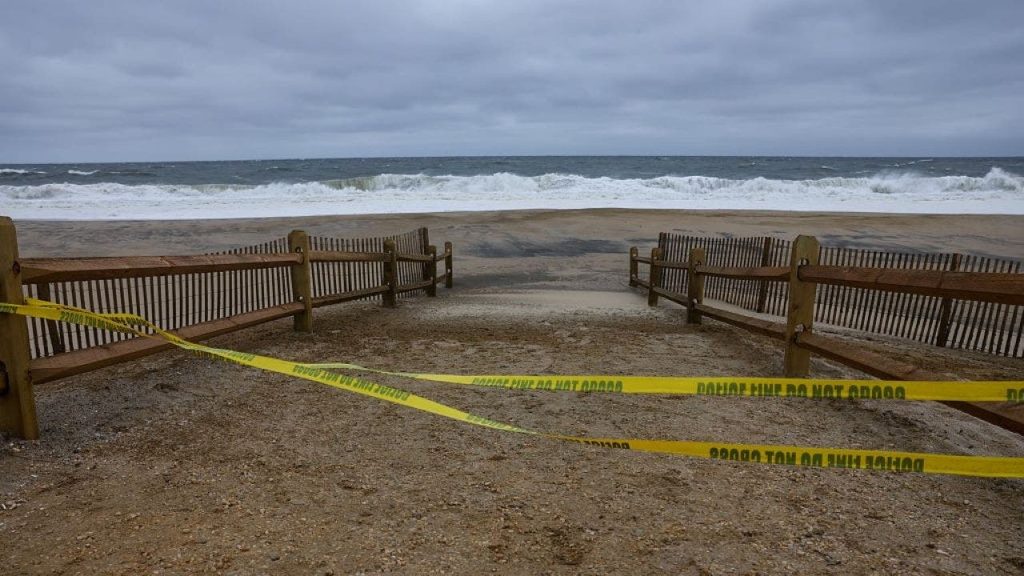Beach Bacteria Warnings Cast Shadow on East Coast Labor Day Weekend
Fecal Contamination Alerts Disrupt Holiday Plans
As Americans flock to beaches for Labor Day weekend celebrations, an unwelcome guest has arrived at shores from Maine to Florida: bacterial contamination warnings. Popular destinations including Keyes Memorial Beach in Cape Cod’s Hyannis village and Benjamin’s Beach on Long Island are among those affected by advisories warning of high bacteria levels that could lead to illness. According to Environment America’s recent assessment, multiple beaches have exceeded the EPA’s safety standards for fecal bacteria—levels that could cause illness in 32 out of every 1,000 swimmers. These contamination notices come at a particularly unfortunate time, as the holiday weekend traditionally marks summer’s last hurrah for many families along the Atlantic seaboard.
Aging Infrastructure Blamed for Beach Pollution Crisis
The primary culprit behind these contamination issues appears to be outdated sewage systems, according to environmental experts. John Rumpler, clean water director at Environment America, emphasized that these beach closures reflect broader infrastructure challenges: “These beaches are a treasure for families across New England and across the country. They are a shared resource. We need to make the investment to make sure that literally our own human waste doesn’t wind up in the places where we are swimming.” The problem highlights America’s aging water management systems, many of which were designed decades ago and struggle to handle increased population demands and climate-related challenges like extreme rainfall events. When these systems fail or overflow, untreated or partially treated wastewater can make its way to recreational waters.
Hurricane Aftermath Worsens Coastal Water Quality
Recent weather events have compounded the contamination issues plaguing East Coast beaches. Hurricane Erin, which recently swept through the region, significantly worsened water quality in many coastal areas. Erin Bryan-Millush, environmental program supervisor with North Carolina’s Department of Environmental Quality, explained that “storm drains carry everything” onto coastal beaches during heavy rainfall. This “everything” includes street runoff, pet waste, and in some cases, overflow from sewage systems unable to handle the surge in water volume. In North Carolina alone, five beaches were under advisories in late August due to elevated bacteria levels. While these beaches remain open, swimmers are cautioned about potential health risks, with officials noting particular concern for those with compromised immune systems.
Public Reaction Varies as Vacationers Weigh Risks
Despite the warnings, public response has been mixed, with some beachgoers proceeding with caution while others dismiss the concerns entirely. At Rehoboth Beach in Delaware, which experienced a two-day warning of elevated bacteria levels last month, retired dentist Yaromyr Oryshkevych expressed minimal concern: “I really don’t expect to be in any kind of danger of fecal contamination.” He based his confidence on the beach’s distance from major pollution sources and his belief in the ocean’s natural ability to disperse contaminants. This perspective reflects a common attitude among holiday vacationers who have invested time and money in their beach trips and are reluctant to change plans based on what they may perceive as overly cautious advisories. However, health officials emphasize that the bacteria warnings shouldn’t be taken lightly, particularly for vulnerable populations including young children, elderly individuals, and those with compromised immune systems.
Understanding the Health Risks of Contaminated Waters
The contamination warnings aren’t simply bureaucratic caution—they reflect genuine health concerns backed by scientific measurement. When beaches exceed EPA standards for fecal indicator bacteria, swimmers risk experiencing a range of unpleasant and potentially serious symptoms. Common reactions to swimming in contaminated water include gastrointestinal illness (manifesting as nausea, vomiting, and diarrhea), skin rashes, eye infections, and respiratory problems. These bacteria enter coastal waters through various pathways: stormwater runoff carrying pet waste from streets, agricultural runoff from farms, wildlife droppings, and—most concerning—human sewage from failing infrastructure or combined sewer overflows. The bacteria themselves aren’t necessarily the main health threat; rather, they serve as indicators that disease-causing pathogens may be present in the water. For most healthy adults, exposure might result in minor illness, but for vulnerable populations, the consequences can be more severe and potentially require medical attention.
Long-term Solutions Require Investment and Public Awareness
Addressing beach contamination requires more than temporary closures and advisories; it demands significant infrastructure investment and increased public awareness. Environmental advocates argue that modernizing America’s wastewater treatment facilities and separating combined sewer systems would substantially reduce contamination events. Additionally, improved stormwater management practices could help filter pollutants before they reach coastal waters. Public education campaigns about the importance of picking up pet waste, proper disposal of boat sewage, and the impact of lawn fertilizers could further reduce bacterial contamination. As climate change increases the frequency and intensity of extreme weather events like Hurricane Erin, these infrastructure improvements become even more critical. For now, health officials recommend that beachgoers check water quality advisories before swimming, shower after ocean activities, avoid swallowing seawater, and keep beach trips for another day if they belong to vulnerable populations and their local beach is under advisory. While Labor Day weekend may be affected for some, the long-term health of America’s beloved beaches depends on addressing these contamination issues at their source.











